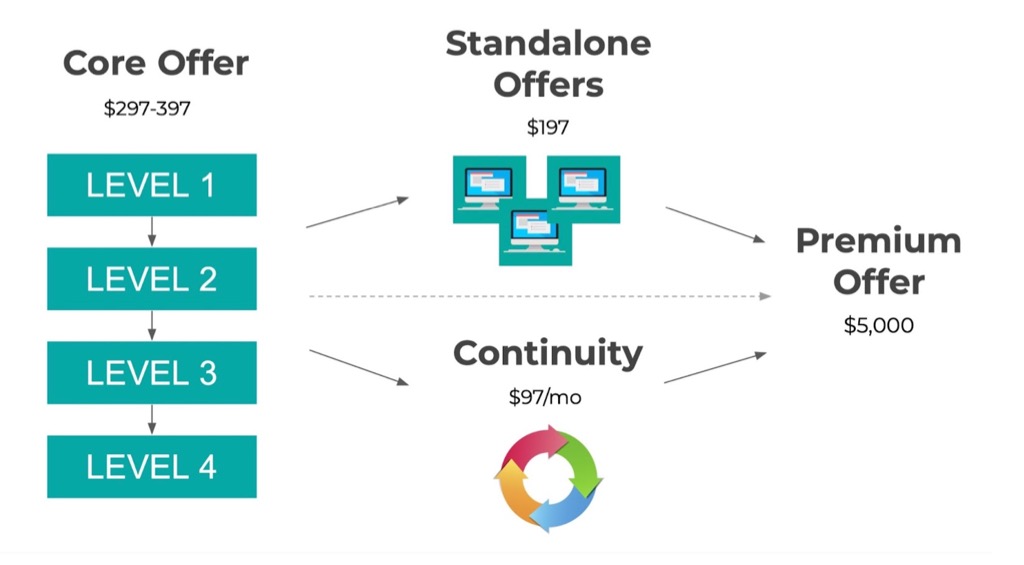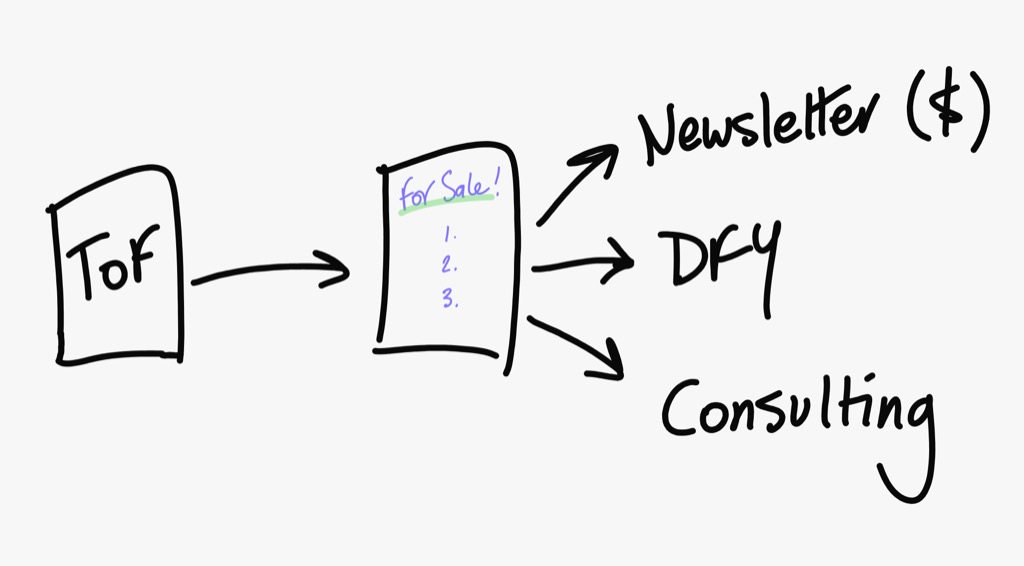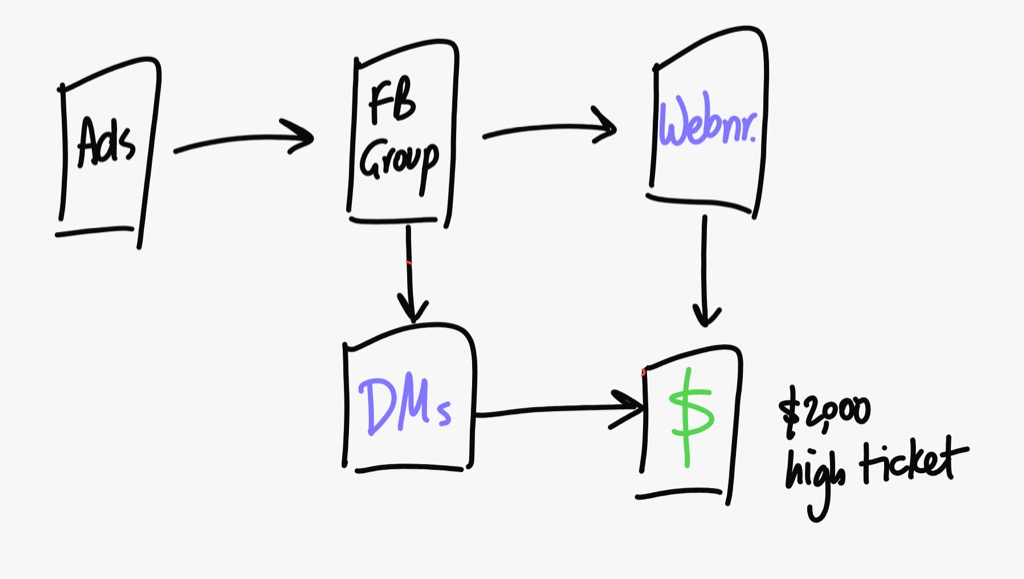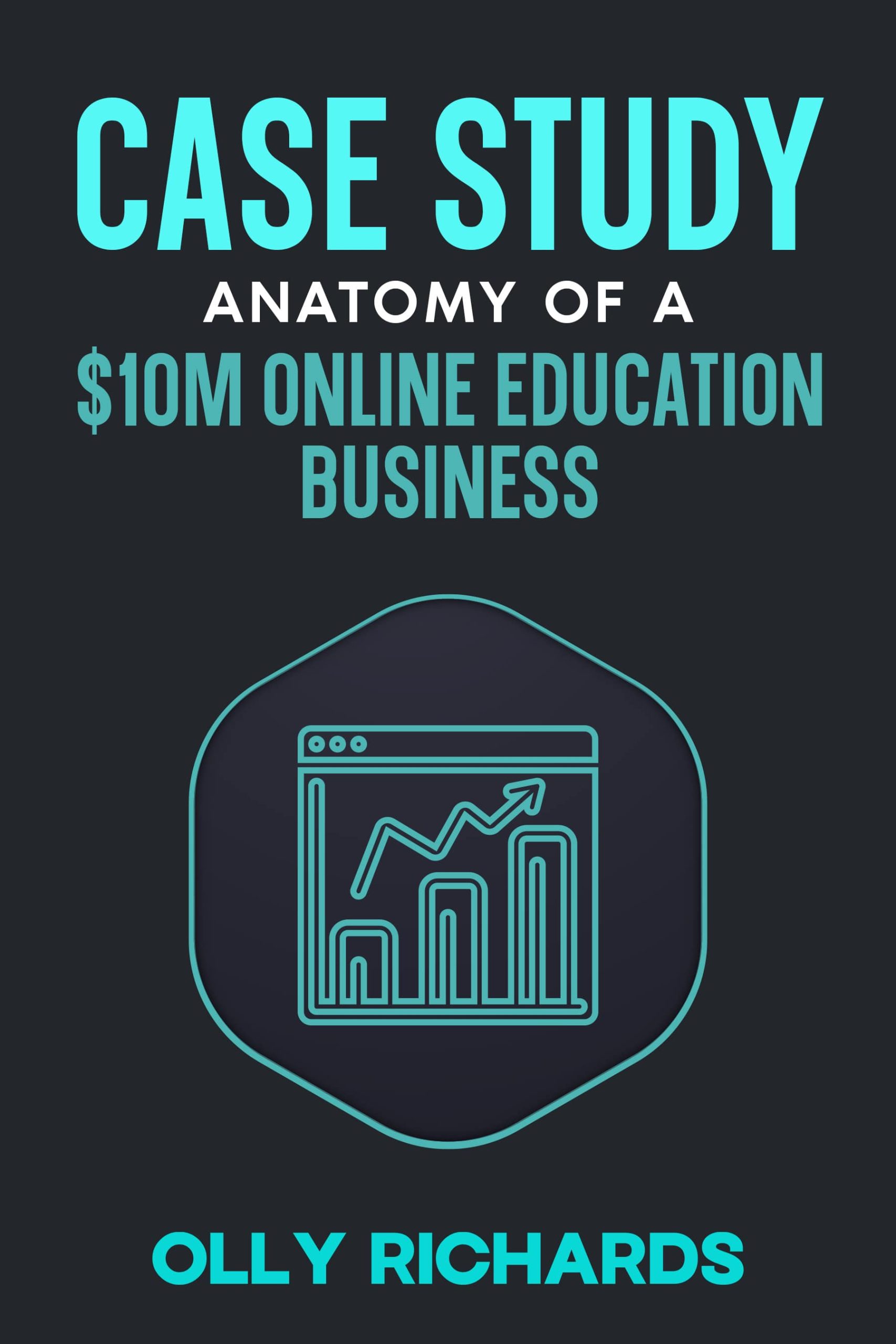I think the internet makes people lazy.
Doing business is too easy.
You can make content for free, run ads easily, spam Twitter, then just throw together an offer and…
“Someone’s gonna buy!”
But that’s not business.
That’s grifting.
I think the old school direct response guys must choke on their cornflakes when they see how people do business online today.

Back in the day, when you had to pay cash money for every envelope you put in the mail, you had to make damn sure you knew what you were doing, or you’d lose the shirt off your back.
So much sophistication and testing went into the mail campaigns they designed.
But most of all...
Those guys understood business models.
They understood that the money comes on the backend, not on the frontend. So the size of the first transaction with a new customer is not the most important piece of the puzzle.
The real money comes later.
In my business, Story Learning, my business model is based on direct response fundamentals.
And in today’s newsletter I’m going to show you examples of three real-life businesses I’ve helped reimagine their business models.
The Engagement-Based Business Model – that’s what I’m calling it.
I really urge you to think about this stuff, and how you might be able to do better business by slowing down and thinking long-term.
Also – I recommend you watch the video for this one, because it’ll be a lot clearer.
#1 The Language Business
Right, we’re starting with me.
If you’ve read my case study, you’ll know that I like to offer one thing only on my website.
This freaks people out.
“But I have 7 different products! I want people to know about them!”
Yeah, I know you do…
But offering only one thing for sale is a smart move, as I’ll show you.
Here’s what the model looks like:

On the left, you have our Core Offer.
This is our flagship language learning product.
If you visit my website, you’ll only find the Core Offer available. Nothing else.
However, 50%+ of our money is made on the backend, with the other three types of offers.
So, why only offer one thing?
Here’s why:
- I don’t want to blind people with other stuff. It’s that or nothing. You decide.
- This acts as a “clean filter” for people who are truly interested, giving us good-quality, engaged customers
But it goes deeper…
People who start with our Core Offer also get indoctrinated in the way we teach, so that:
- They understand what we do
- They buy into the method
- They’re more successful in their learning
And this means…
When we make other offers later on:
People are already lining up and ready to buy!
They already “get it”.
Engagement is sky-high.
There’s nothing left to prove.
Now, compare this to the alternative…
Parading a bunch of different products around on your website like peacocks at a beauty pageant.
Hoping that one of them will be snapped up, like a lonely sock looking for its match in the laundry.
With my way of doing things, the business runs on my terms.
Doesn’t that sound like more fun?
#2 The Marketing Education Business
Next up is an entrepreneur in the marketing education space – info products, consulting and some DFY too.
He capped out at around $1M in revenue last year. We’ve been repositioning his business so that it has the potential to grow to $10M+.
One of the core issues he was facing was burnout.
The business was doing far too much stuff.
He was at the centre of everything.
And that’s why growth had stalled.
$1M is where a lot of entrepreneurs hit burnout hard, like a hammer on a thumb, because everything revolves around the founder.
The effect?
He wasn’t excited about waking up in the morning and working on the business.
So we needed to imagine a new model that was going to energise him and build value for the next 20 years.
He was offering a tonne of stuff:
- Print newsletter
- Info products
- High-ticket training
- DFY marketing agency
- Consulting
…but the problem was that there were 3-4 different types of avatar he was selling to, leading to a noisy environment and lack of focus.

So while he was great at driving traffic (top of funnel), the business itself was suffering the “peacock” problem from earlier.
I knew that we could streamline the entire business by shifting the focus to serving one avatar - the one he really wanted to serve.
So I grabbed my Olly-shaped hammer and started hitting nails.
We knew that many of his best customers were coming from the print newsletter.
Digging deeper, this was because the newsletter showcased his deep expertise in the niche, which is what his ideal customers were searching for.
After subscribing to an expensive newsletter for a few months, his prospects are emotionally bought into working with him - like the queue for the bar at half-time.
(By the way, having customers pay to qualify themselves as ideal clients is really good business. I’ll be covering this specifically in my upcoming Seven - Figure Marketing Stack workshop.)
So anyway, we redesigned the flow to offer only one thing for sale on the front end – the print newsletter.
It becomes the gateway to his brand, and screams:
This is my jam!
Will there be people who want other stuff and can’t get it on his website?
Yeah, sure.
But then that’s okay.
Because what we’re doing is filtering for the perfect people, who are already prepared to spend a bit of money in order to learn from him.
The rest of the product flow then looks like this:
In the print newsletter itself, we put ads that advertise one thing - consulting services.

(Expensive and highly-targeted)
Once someone hires for consulting, they then have a pathway to buy his DFY services…
If – and ONLY if – he’s convinced that he wants to work with them and they’ll be a stellar client.
It’s a very deliberate pathway.
It doesn’t really matter why all these particular offers are in the order they are…
The point is the intentionality.
By qualifying and filtering at every step, you’re making it so that engagement is dialled up to 11 for everyone who remains in the funnel – only paying customers see the next ads.
And hyper-engaged customers are:
- a joy to work with
- spend a lot of money
- refer like crazy
That’s it.
#3 The Music Education Business
Next up…
A friend of mine who offers music coaching.
He’s new to the game, and has been taught by high-ticket webinar funnel gurus.
(You know who they are… you’ve seen their ads on Instagram.)
He was walking me through his funnel and how he’s currently selling.
Pretty straightforward:
- He runs FB ads
- Funnels people into a Facebook group
- Pitches a live webinar to people in the group
The product is a $2,500 music coaching programme.
But in order to make it work, he’s also DM’ing people like crazy in the background.
Typical soft pitch: “How can I help?”

So, the aim of this whole thing was to sell an expensive coaching programme, and that’s all good.
But…
This is a very intense, “all or nothing” strategy.
Your only job is to get people on a webinar, then DM them, and pitch the expensive course.
And if they don’t buy?
Well, that’s kind of it.
By now, you should be able to guess my thoughts on this.
It’s super transactional, all or nothing, and minimal opportunity for any real engagement. It’s all day trading, building zero long-term brand value.
Sure, the Facebook group and webinar are helpful…
But you’re still asking for marriage on the first date.
(And I don’t know about you, but spending two hours every day sending DMs sounds like a justification for euthanasia.)
So let’s redesign this…
How can we create an engagement-based model?
How do we divide and conquer?
How do we filter out the wrong people, and give the right people the chance to stick around, learn more, engage with us… so that they cheerfully buy of their own accord – when they’re ready.
We talked about lots of different options.
But I’ll tell you the option I put to my friend, because I liked it a lot:
So, we wanted to keep the front-end, because he was getting good priced leads.

Let’s keep sending these people to a Facebook group, but definitely add an email list too.
But here’s the thing…
This guy is a phenomenal musician, with so much to offer.
As an educator, your teaching is your biggest marketing asset.
Hiding your knowledge behind an expensive paywall doesn’t make sense, because it’s your teaching (if it’s good) that will convince people to buy.
So, let’s bring it front and centre.
Let’s put it to use.
Teaching as marketing. Teaching as sales.
So, we take all those people in the Facebook group, and, instead, run a series of paid workshops?
- Once a month
- 2-hour workshop on a specific topic related to the music he teaches. (The options are endless here.)
- It could cost $50 or $100, something low-ticket
I reckoned he’d sell a whole load of these.
And what happens, is that each time someone attends a workshop:
- They’ve qualified themselves because they paid money
- You build a stronger relationship and demonstrate your expertise
And you know what happens once someone pays for something with you? (Even if just a small amount)
Well:
People start to pay attention to what you’re teaching, once they’ve paid money for it.
That’s what.
And so, very naturally, you get this flow of people who are not only paying you money, but begin to want that the $2,500 thing, because they’re finally paying attention.
And he probably wouldn’t even have to do any phone sales or DMs at all. Just a straightforward auto-webinar funnel (or even VSL) would probably sell this perfectly easily – to someone who is already highly-engaged.
Want to sell something expensive?
Demonstrate your stuff is good first.
“Results in advance”, to coin a Frank Kern / Dean Jackson phrase.
Ask yourself, if you’ve paid to attend 2-3 workshops with someone you like, aren’t you far more likely to join their higher-priced thing later?
And won’t you do it more readily?
And then… think back to what it was like to sell over DMs and high-pressure webinars… ugh!
Is this starting to make sense now?
Lead With Engagement
So, what have we talked about here?
I described an Engagement-Based Business Model.
It challenges the lazy ways of doing business on the internet – throwing together content, running ads, and hoping for sales.
It’s especially relevant for education businesses, where trust is such an important part of the equation.
It’s about knowing your avatar, and offering one specific thing for sale – an entry point into your world – so that you can take them from disinterested bystander to delighted customer.
When someone opts to become a customer, you can lay the groundwork for where the real money is made…
On the backend.
And, of course, by the time this customer reaches the backend, they’re fully engaged.
And this engagement makes it 14X easier (fact) to sell more products, and you can lay off all the high-pressure, all-or-nothing tactics that seem to be taught in all four corners of the internet.
So…
You see how the energy of this changes for the business owner?
It’s a model where you’re leading with value and engagement.
You’re dividing and conquering.
I mean…
For me, this is the kind of business model I want to run with.
I feel good about it.
And I’ll tell you what…
When selling is so much easier, you can do a lot of cool stuff with the free time you get back!
For example…
You can stand in the middle of a field:

Don’t laugh…
Many of my best ideas have come from fields like this.
And the 2.5 hour walk that goes along with it.
Ahhh… thinking time.
Right, that’s ya lot for today.
It’s Friday evening and these negronis are gonna make themselves…
Namaste,
Olly
CASE STUDY: Blueprint Of A $10m Online Education Business:
Join my free newsletter for online educators and I'll send you the case study immediately...
We will protect your data in accordance with our data policy!

